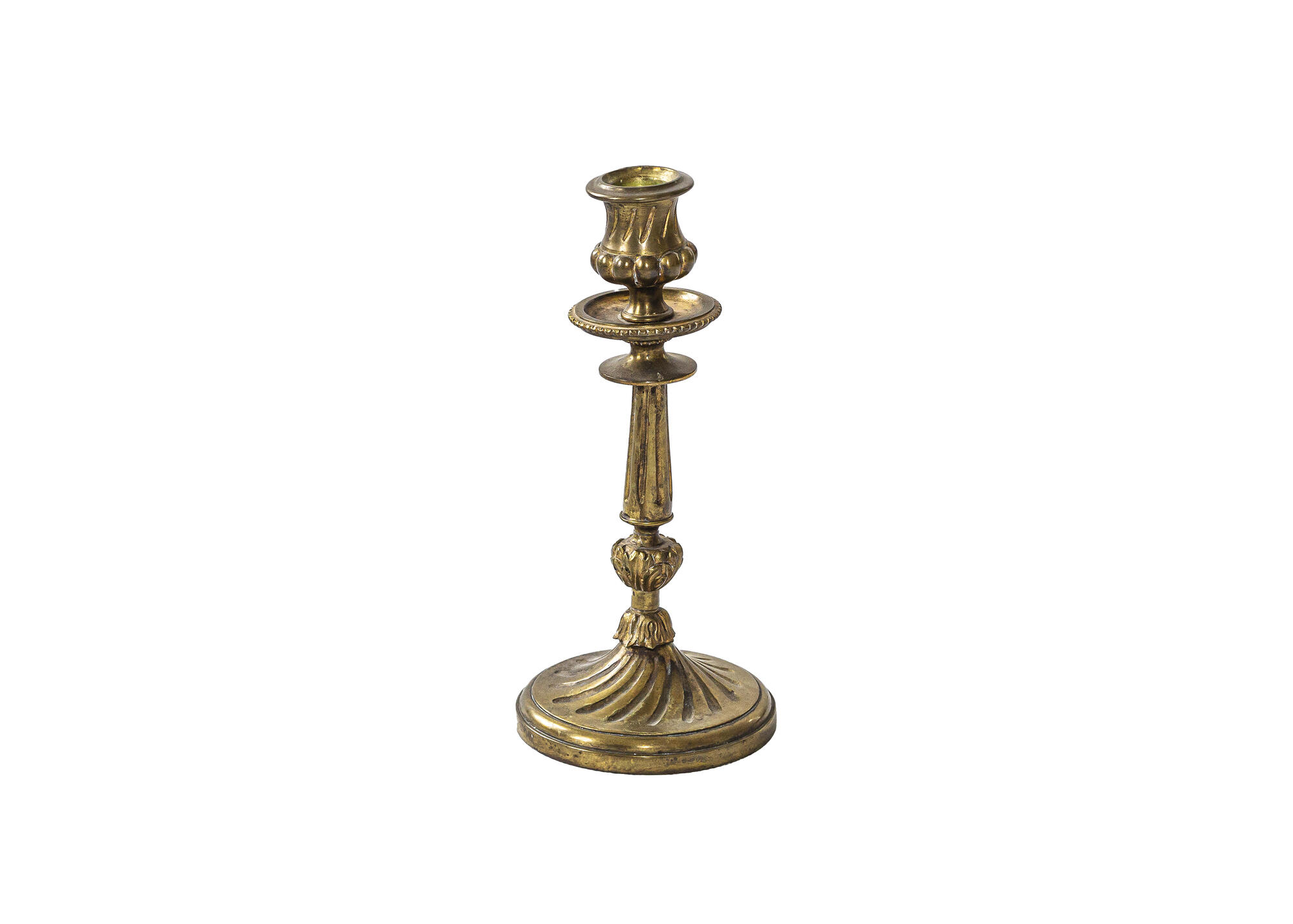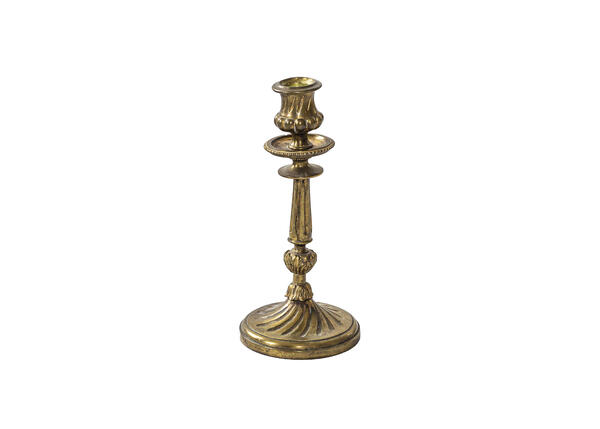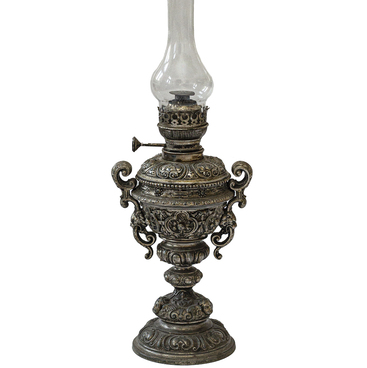In the olden days, candlesticks were used to hold candles and to protect furniture from dripping wax. They were usually made of copper alloys. The shape and size of a candlestick depended on its purpose. Small low candlesticks with a wide tray and a handle were used as portable candlesticks. Tall and massive ones (they were called “flambeau”) were placed on writing and dining tables, and lighter candlesticks were placed on dressing tables.
Historians believe that the first candlesticks appeared in Ancient Egypt. They were used as ritual objects. Egyptians made candlesticks in the form of a lotus flower, which, according to legend, gave birth to the sun god Ra. They were made of cane, clay, or wood. Such lamps were placed in temples. In ancient Greece, candlesticks were made of clay. To make them last as long as possible, they were covered with varnish.
Only in the 16th–17th centuries, artisans began to use tin, brass, bronze, silver to manufacture candlesticks. The appearance of the lamp was changing according to fashion. Baroque candlesticks were characterized by ornate decorations with many details. At the end of the 18th century, more modest variants in the neoclassical style appeared. In the 19th century, cheaper and more accessible cast-iron candlesticks became popular. Not only the nobility and wealthy merchants could afford them. The famous Kaslinsky Ironworks, founded in 1747 in the southern Urals by the merchant Yakov Korobkov, produced such products. The first candlesticks at the factory were made in the 1940s. The production of cast-iron candlesticks at the Kaslinsky factory continued even after the Russian revolution under the Soviet regime but was unsuccessful.
In the second half of the 19th century, some firms began to make marble and alabaster models. The candlesticks were decorated with carving, figures of birds, horses, and dragons.
In 1853, the kerosene lamp was invented. One such lamp replaced ten candles and was much more convenient to use. Gradually candles began to be lit only on special occasions, and candlesticks became interior decorations.
Historians believe that the first candlesticks appeared in Ancient Egypt. They were used as ritual objects. Egyptians made candlesticks in the form of a lotus flower, which, according to legend, gave birth to the sun god Ra. They were made of cane, clay, or wood. Such lamps were placed in temples. In ancient Greece, candlesticks were made of clay. To make them last as long as possible, they were covered with varnish.
Only in the 16th–17th centuries, artisans began to use tin, brass, bronze, silver to manufacture candlesticks. The appearance of the lamp was changing according to fashion. Baroque candlesticks were characterized by ornate decorations with many details. At the end of the 18th century, more modest variants in the neoclassical style appeared. In the 19th century, cheaper and more accessible cast-iron candlesticks became popular. Not only the nobility and wealthy merchants could afford them. The famous Kaslinsky Ironworks, founded in 1747 in the southern Urals by the merchant Yakov Korobkov, produced such products. The first candlesticks at the factory were made in the 1940s. The production of cast-iron candlesticks at the Kaslinsky factory continued even after the Russian revolution under the Soviet regime but was unsuccessful.
In the second half of the 19th century, some firms began to make marble and alabaster models. The candlesticks were decorated with carving, figures of birds, horses, and dragons.
In 1853, the kerosene lamp was invented. One such lamp replaced ten candles and was much more convenient to use. Gradually candles began to be lit only on special occasions, and candlesticks became interior decorations.



